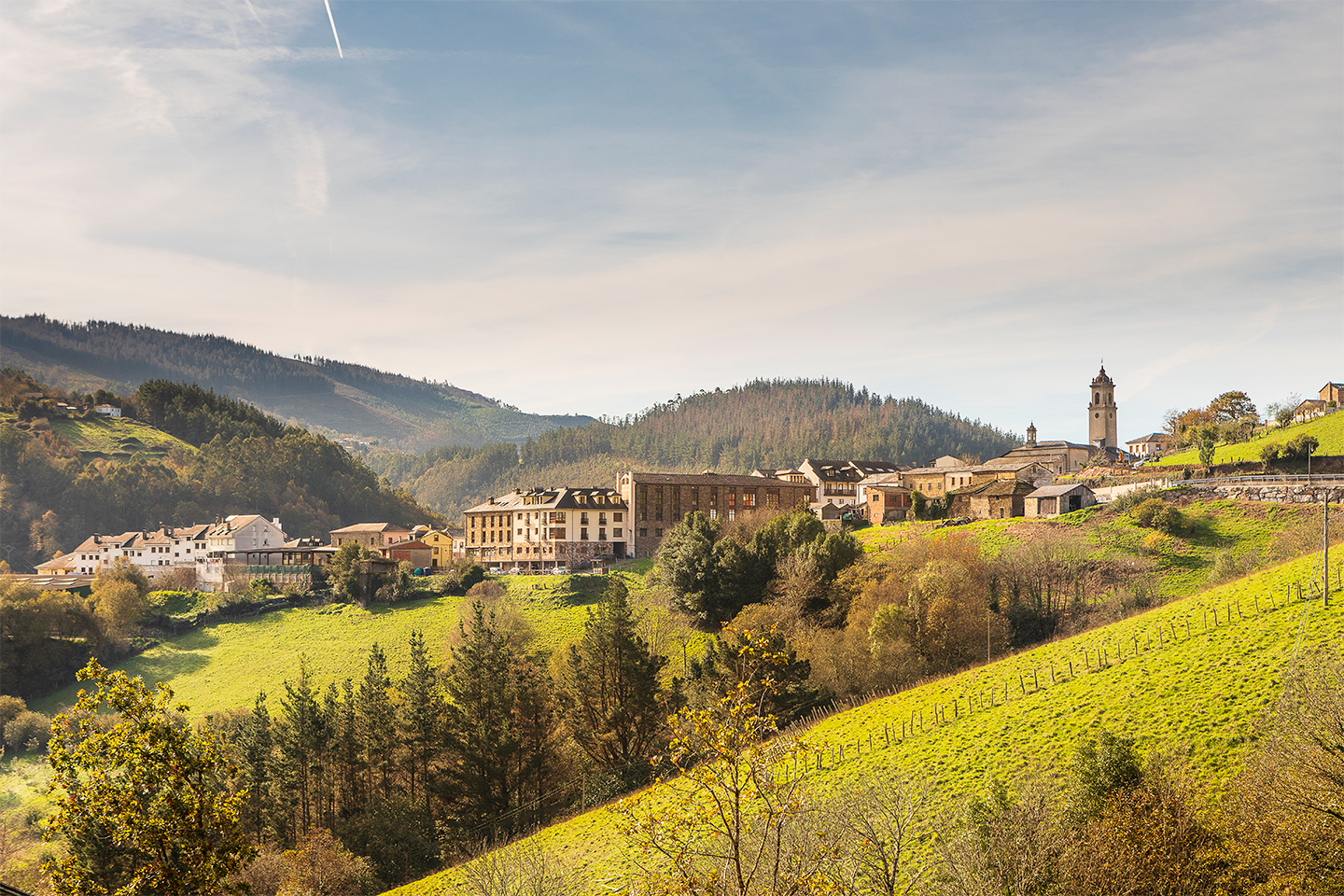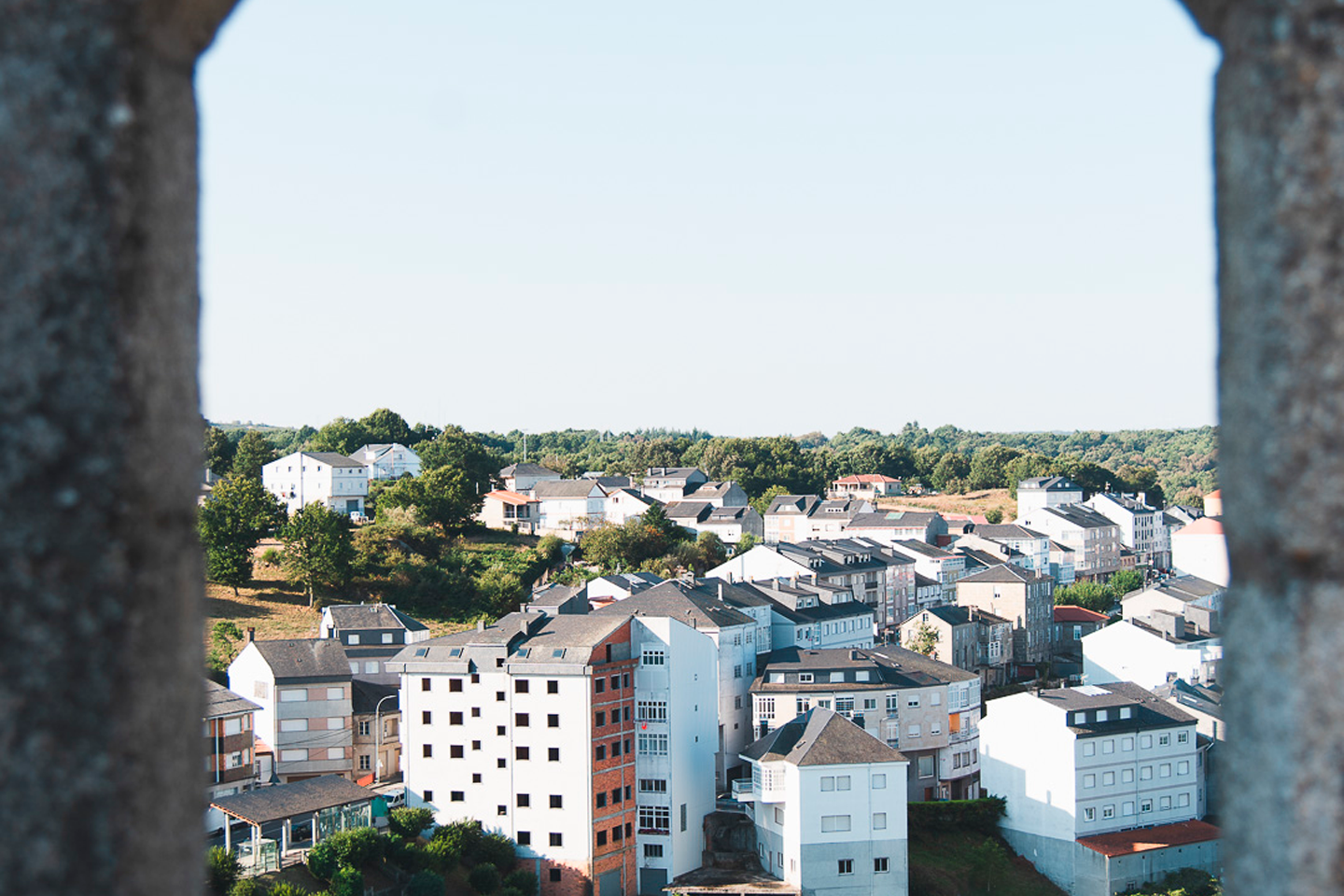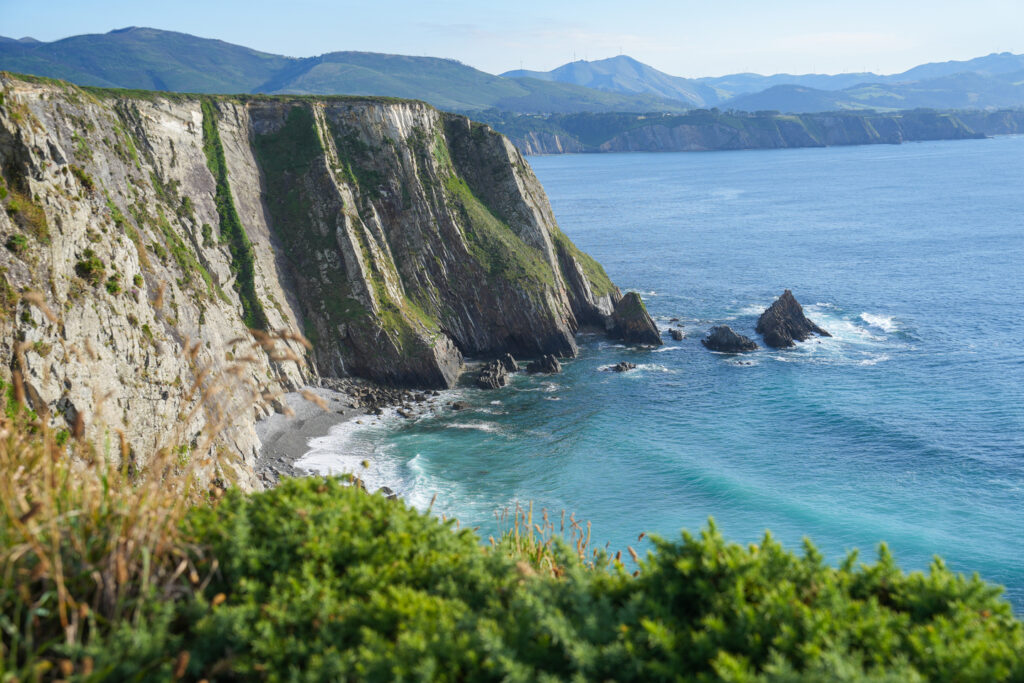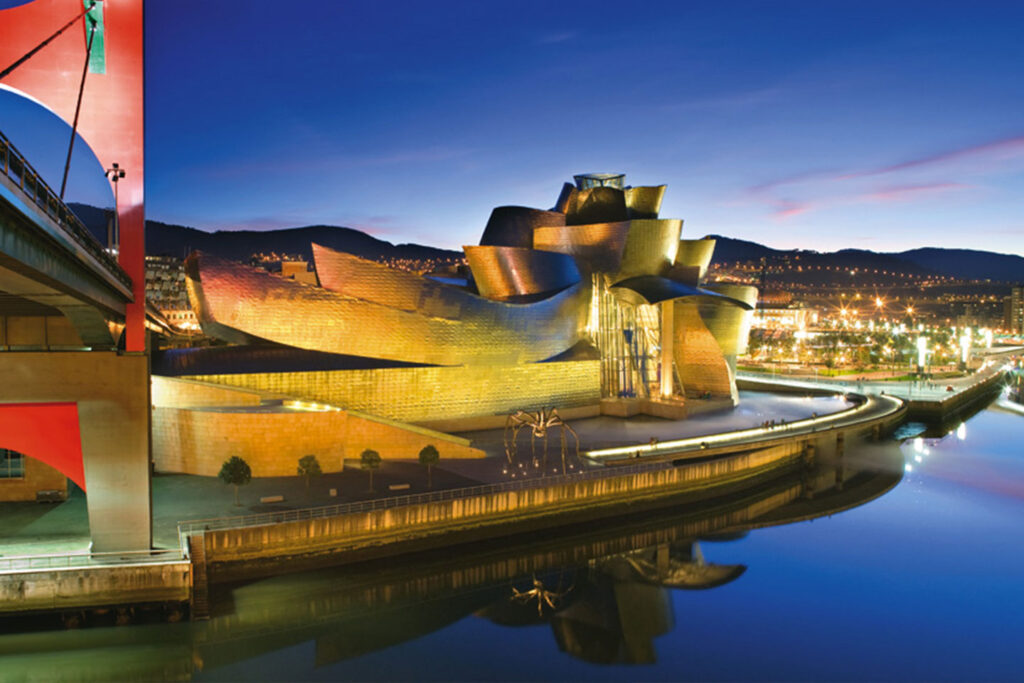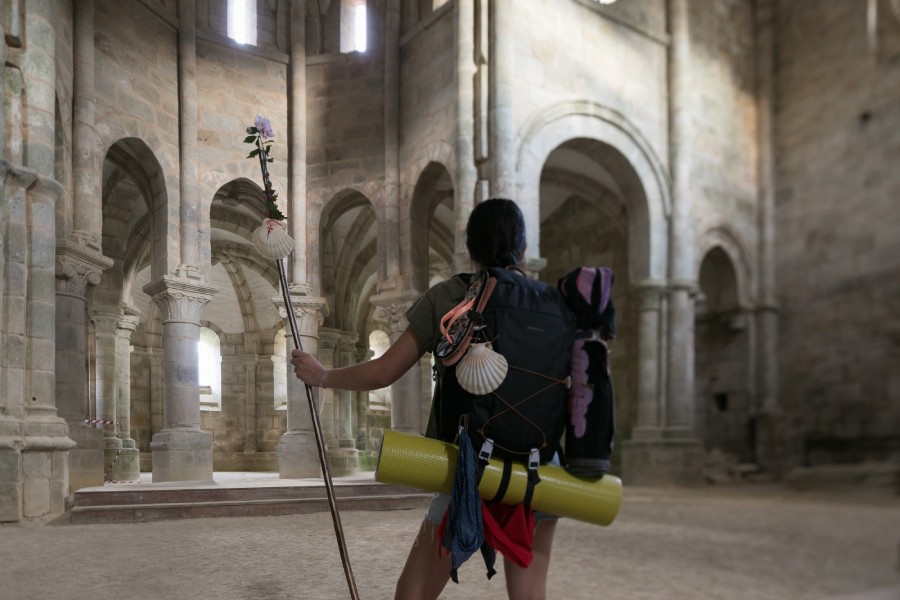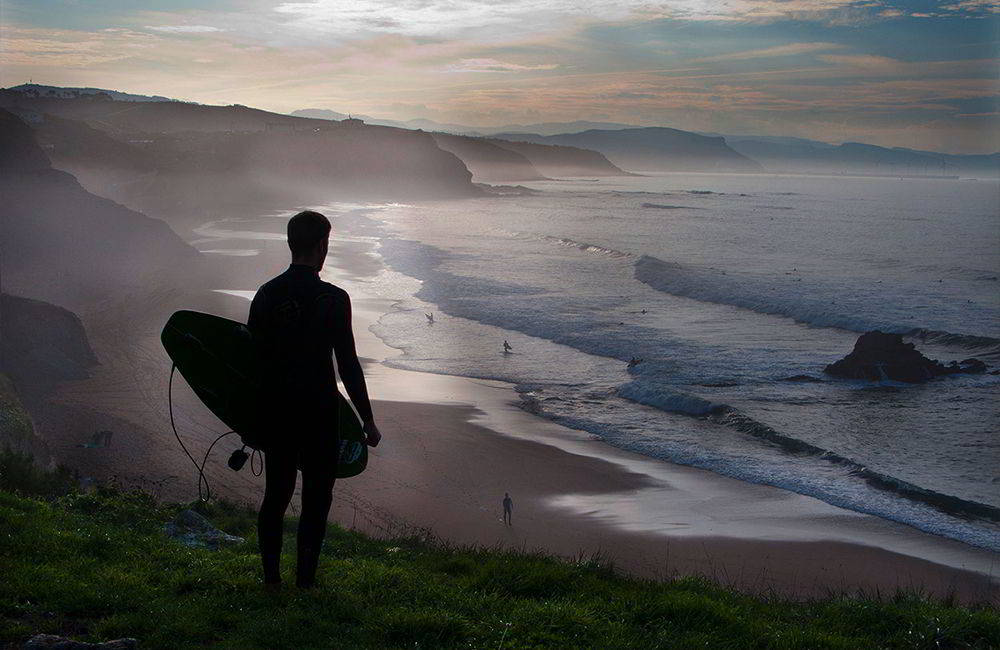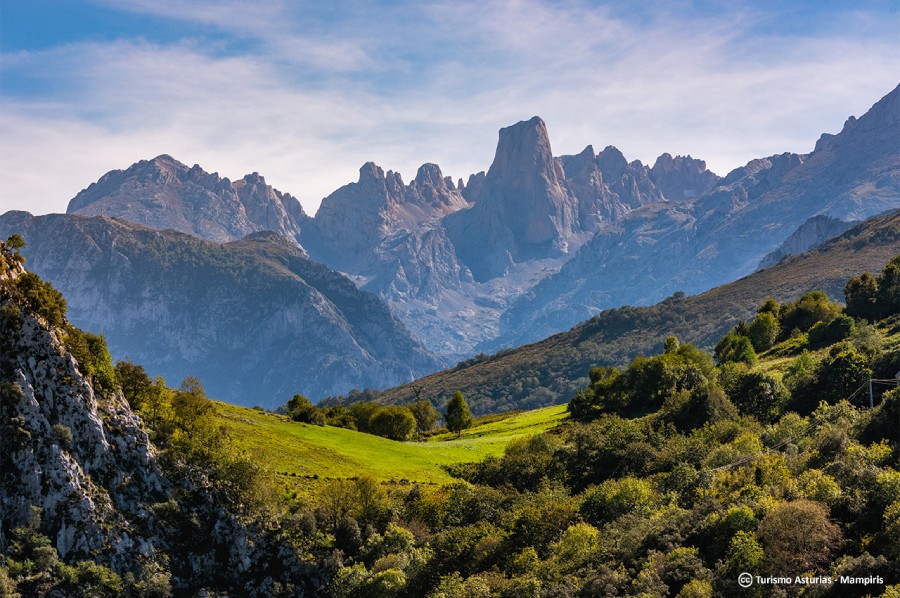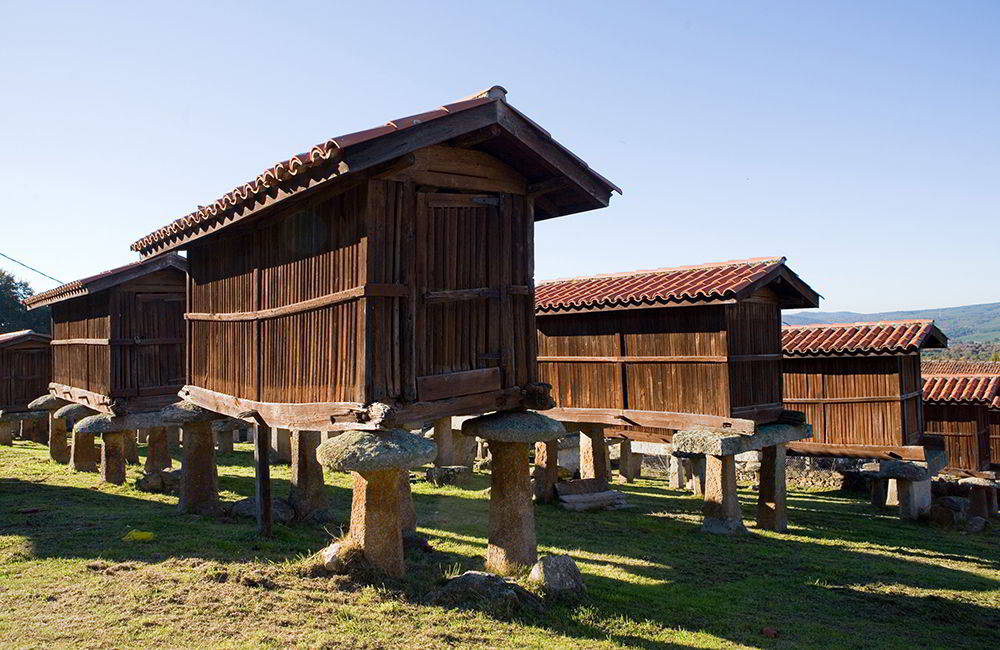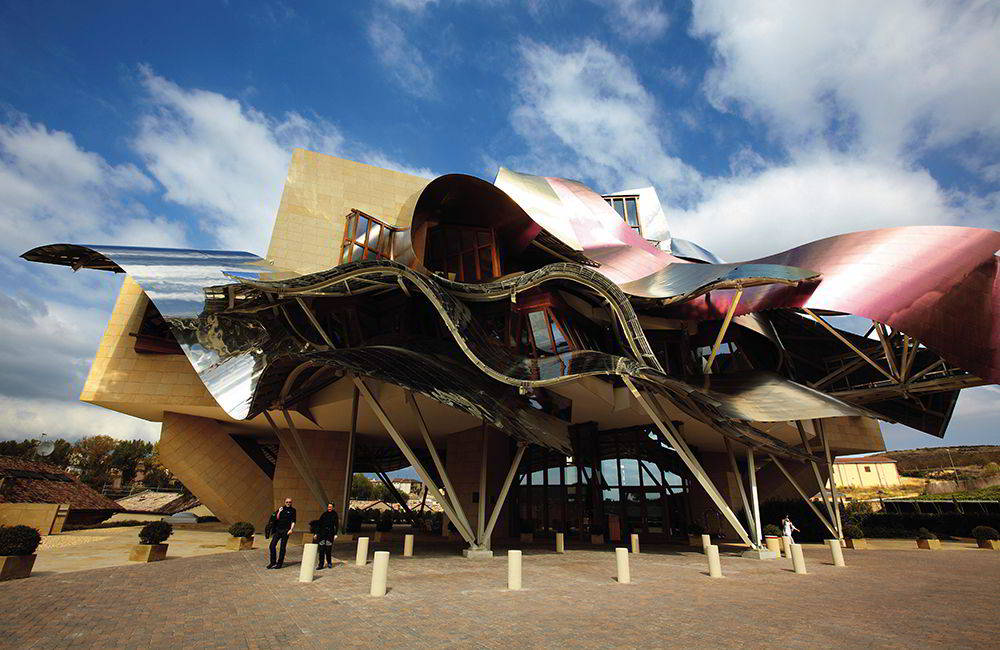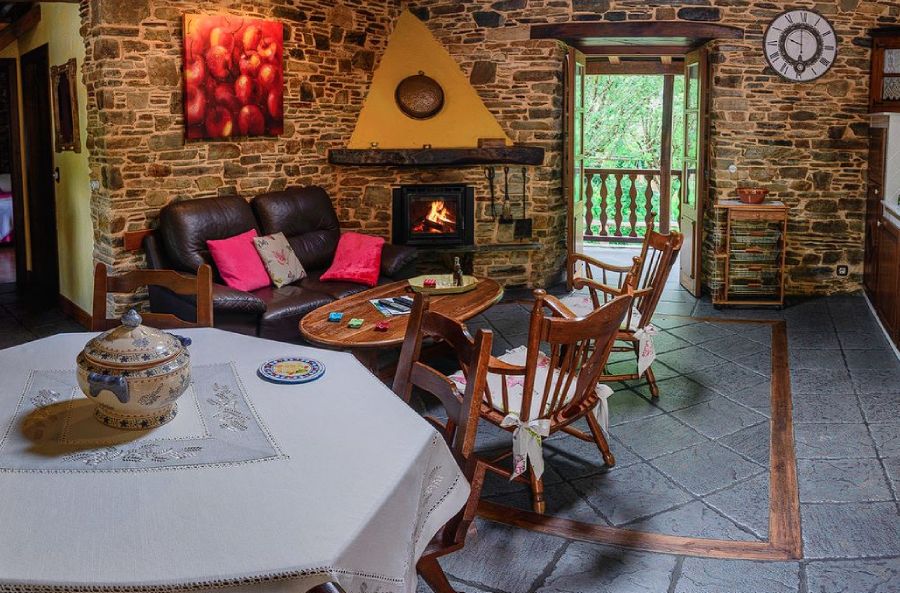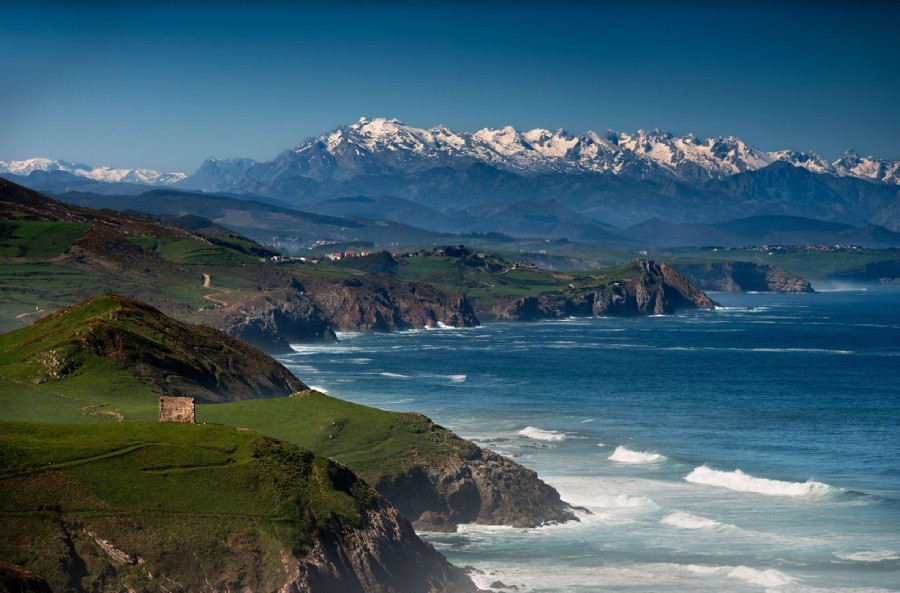Do you want to discover cozy villages where you can connect with nature? Do you enjoy hiking and learning about the rural legacy of our ancestors? Are you looking for charming spots to impress your Instagram followers? We’ve selected four enchanting villages in Green Spain, perfect for enjoying both winter and summer.
Segura, Gipuzkoa (Basque Country)
What to See in Segura
Segura was born in the 13th century and thrived for 500 years thanks to the Royal Road that connected the markets of Castile with the ports of the Cantabrian Sea. This road ran through the village and, naturally, brought merchants and travelers. Later, new routes were developed—less rugged and faster—to connect the plateau and the sea, diminishing its importance.
Segura still preserves from its glorious days a peculiar urban layout (shaped like a medieval almond), numerous noble buildings, three access gates from the old walls, and an impressive church: Nuestra Señora de la Asunción. This church features a fortified apse, a legacy from the time when the village resembled a castle.
The Calle Mayor, narrow and sloping as tradition dictates, is the town’s finest showcase, with a wide array of noble buildings and mansions: the Guevara Palace with its gargoyles; the Baroque-style Balenzegi Palace; Ardixarra House, a gem with a sturdy wooden structure; and Lardizabal Palace, now the town hall, which has long been rumored to be home to a ghostly resident.
What to Do Near Segura
The San Adrián Tunnel in the Aizkorri-Aratz Natural Park is the very reason for Segura’s existence: it is a spectacular mountain pass at 1,000 meters above sea level that connects Gipuzkoa with the Álava plateau. It’s worth the trip to visit (by car, then walking for about an hour) to see the medieval road, a dense beech forest, and a natural cave (the aforementioned tunnel) that was once home to a handful of buildings, of which only a modest little chapel remains today.
Surrounded by gently sloping meadows and governed by a charming square – where the Jauregi Palace stands out with its enigmatic sun carved in stone – the village of Zerain is another gem in the Goierri region of Gipuzkoa. It features a 16th-century prison and an interesting Ethnographic Museum that showcases objects, customs, and traditions of rural Gipuzkoa. Very close by, nestled in the folds of Mount Aizpita, lies the other great treasure: the so-called Iron Mountain with its lime kilns.
Carmona (Cantabria)
What to See in Carmona
The first thing to see in Carmona is, without a doubt, Carmona itself. That is, to contemplate its most attractive panoramic view to understand the charm of the village. The ideal way to do this is to approach the town from the Saja River valley, ascend to the pass via the CA-182 road, and, on the descent, stop at the Asomada del Ribero. That cluster of houses surrounded by a green carpet is Carmona, one of the Most Beautiful Villages in Spain.
This picturesque village, located next to the Nansa River and declared a Historic-Artistic Site, is reminiscent of an inland Santillana del Mar due to its exquisite restoration and preservation, but here everything takes on a different scale. Centuries have passed since time stood still in this corner, and everything, down to the last corn cob hanging from the wooden railings, seems to belong to the past.
There’s no need for instructions to explore Carmona; just let yourself be guided by the smell of firewood and hearth. Soon, the immense Mier Palace will appear, the sculptural tribute to the Tudanca cow (it’s not uncommon, either, to see real Tudanca cows grazing on the land near the village), along with several mansions featuring lowered arches, delicately crafted in ashlar stone.
What to Do Near Carmona
If we leave Carmona heading east, we’ll reach the Cabuérniga Valley (crossed by the aforementioned Saja River) and look for the town of Ruente. The Fuentona de Ruente is a curious spring that emerges from a grotto and turns into a rushing stream. Following its course will lead us to the famous eight-arched stone bridge. Interestingly, it’s said that a anjana, a benevolent fairy from Cantabrian mythology, resides in the spring and regulates its flow at will.
If we leave Carmona heading west, a very specific instruction for the GPS is needed: it’s time to guide us to the Soplao Cave, known as the ‘Sistine Chapel’ of Cantabrian geology. This natural cave boasts an extraordinary array of unique rock formations, including stalactites, stalagmites, and eccentric formations of all shapes, sizes, and colors.
Taramundi (Asturias)
What to See in Taramundi
Taramundi, the principal village of its namesake region, lies hidden among the mountainous folds of Asturias, near Lugo. Though it feels remote, it’s only 30 kilometers from the coast. The drive from the Ribadeo estuary to this verdant haven is part of the Biosphere Reserve of Río Eo, Oscos, and Terras de Burón.
Known for its traditional knives and blades, Taramundi showcases this craftsmanship at the Traditional Knife Museum, home to the world’s largest knife, and the Loom Museum
Wander the village to visit the San Martín Church, admire its tall bell tower, and explore Os Castros, a Bronze Age fortified settlement predating Roman occupation.
Many people know Taramundi for its prized objects forged quite literally in this land: its distinctive knives and blades. These pieces are a true reflection of the landscape of this corner of Asturias: countless streams, creeks, and rivers that, in addition to water, provided hydraulic energy cleverly utilized by the locals. This entire history is engagingly explained in two must-visit museums: the Casa Museo de la Cuchillería Tradicional de Taramundi, home to the world’s largest knife (easy to spot, of course), and the Loom Museum, also in Taramundi.
Taramundi is the perfect size for wandering aimlessly and unhurriedly, visiting the San Martín Church with its tall bell tower, or discovering a Bronze Age curiosity: the Castro de Os Castros, a fortified settlement predating the Roman arrival on the Iberian Peninsula.
What to Do Near Taramundi
A short walk of just a few minutes takes you to Mazonovo, home to the largest mill museum in Spain, featuring 19 hydraulic marvels that are still operational. Those eager for a longer walk can take on the full Ruta del Agua, a nearly 15-kilometer route.
Heading up the valley, you’ll soon reach Os Esquíos, another fragment of the past that has remained practically untouched to this day. It consists of the Santo Domingo Hermitage, the small urban core, and, nearby, the Ethnographic Museum of Esquíos, which houses over a thousand antique pieces and objects that highlight the rural and cultural heritage of the area. Want more places like this? The ethnographic complex of Os Teixois, a sort of ‘industrial park’ of the past with centuries of history, is a must-see.
O Castro de Caldelas, Ourense (Galicia)
What to See in O Castro de Caldelas
O Castro Caldelas is one of the hidden gems of the Ribeira Sacra, which is saying a lot because this Galician region is brimming with superlatives: it boasts the highest concentration of Romanesque temples in Europe, a breathtaking river canyon (that of the Sil River), and is home to a wine appellation (D.O. Ribeira Sacra) whose wines enjoy international acclaim. And then, of course, there’s O Castro de Caldelas.
The Castle of the Counts of Lemos is the must-see attraction. It’s impossible to miss because this 14th-century fortress, perched at the highest point, not only overlooks the village but also commands all the surrounding landscapes. No one in the Edo River Valley moves without the fortress noticing. Today, the building houses the fascinating Archaeological and Ethnographic Museum.
It doesn’t matter if the weather is less than ideal because O Castro de Caldelas was designed to shield walkers: narrow streets, cobblestone roads, or arcades like those in Praza da Torre provide ample shelter. Strolling along Sol and Grande streets, searching for hidden corners or visiting the Church of Santa Isabel, which marks the northern end of the village, is always a delight.
d
What to Do Near O Castro de Caldelas
If we could only visit one Romanesque monument in the Ribeira Sacra, it might be the Monastery of Santa Cristina de Ribas de Sil. Not only because of its immense artistic value but also because time and the relentless action of Galicia’s humid nature have only enhanced its charm. Be sure to look for the rose window on the façade, the erotic corbels, and the “armarium claustri,” where monks once stored their books during their strolls.
The Sil River Canyon is such an expansive wonder that you could spend an entire day driving from viewpoint to viewpoint without losing your enthusiasm. The closest lookout to O Castro de Caldelas? The Mirador de As Penas de Matacás. The most famous in the region? The Mirador Os Balcóns de Madrid.
